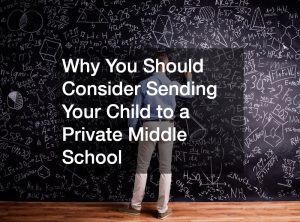One of the badly hit sectors by the COVID-19 pandemic is the educational services industry. Many of the usual conventions surrounding education became defunct when the pandemic hit schools and universities worldwide. Schools around the world suffered losses because of the lack of enrollees for one whole academic year. A lot of the teaching shifted to the digital field. Meanwhile, universities offered online classes as a substitute for actual educational activities.
While online learning or e-learning allows both student and teacher to learn at their own pace, the novelty of having the professor or teacher in front of you is widely different from just merely having your classes in front of a computer.
Studies and reports are claiming that many students are suffering because of the “new normal” method of attaining education. The mental distress, along with the newly imposed method of studying, is not helping the millions of students stuck inside their homes. The uncertainty surrounding the pandemic is not the only thing causing extreme mental distress to students.
All persons, especially children, need some form of socialization to thrive and function as a normal human being. As our social interactions are merely limited to the digital world, the hunger to reach out, touch, and connect with other human beings grows as the months go by. The entire situation has been so difficult for children and students alike, as they have spent most of their lives among other youth in the context of education.
We must be able to move forward with regard to the younger generation’s education. What are the current trends that have emerged in educational advancement amidst the pandemic?
Homeschooling
Many have resorted to homeschooling students to keep them safe from the effects of the virus. Homeschooling is not a new concept for beleaguered students and parents. Even before the pandemic, a lot of families have resorted to homeschooling due to various reasons. Bullying, special cases, and the quality of education are a few of the reasons why parents opt to homeschool instead of making their children attend an actual school. For financial reasons, parents may educate their children themselves rather than spending too much on sending their children to school.

Amidst the pandemic, however, homeschooling became a legitimate option for parents to simulate the actual school environment. Because children are not allowed to go to school physically, parents have opted to teach them in their houses instead of partaking in a virtual class. Some have reasoned that virtual classes hold less water than a homeschooled class. The actual attitude of people with regard to homeschooling has changed to one of understanding and acceptance. Many wouldn’t risk their child going out and possibly contracting the virus.
Mental Help
Mental illness has been on the rise ever since the pandemic began. Both teacher and student are not spared from this hardship. Many have resorted to becoming actual first responders to mental health problems by undertaking a mental well-being first aid course. Being educated in this course will enable educators to respond properly, even through online communication, to signs of substance abuse and mental stress.
These stressors can negatively affect the way students memorize, focus, and understand their lessons. It hinders people’s performance and communication skills. Retention is so important in one’s school life. Taking care of one’s mental fitness is one of the main trends that has emerged out of the pandemic.
Non-Digital Modes
While it may be an impossibility for first-world countries, developing countries still have spots within their country that have no internet. Unfortunately, digital access is not always available for the numerous students that still need to learn amidst the pandemic.
As a Band-Aid solution, governments have been engaging in non-digital modes of schooling their youth. In some countries, lessons are televised through state-owned television stations. Within a set schedule, lessons are streamed on television to help fill in the gaps in education. In other countries where even the television sets aren’t always readily available, paper sheets containing lessons are sent out to the students to cover the lessons that need to be taught.
Many problems are plaguing the educational system in the new normal. The current trends with regard to the educational advancement of youth are very telling. The symptoms of the cracks that need to be solved are showing, and it’s not good. To move on from the effects of the pandemic, we should be able to address the problems hounding the imploding educational system we have in place. The pandemic has, unfortunately, shown how unprepared we are when a disaster takes place.
















